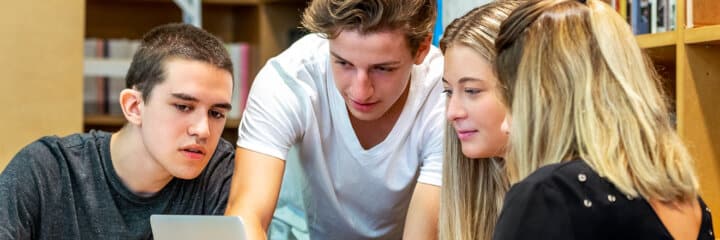The impact of gaze-based assistive technology on daily activities in children with severe physical impairments
Maria Borgestig har i sin avhandling undersökt vilken effekt ögonstyrd dator som hjälpmedel har på dagliga aktiviteter för barn med omfattande rörelsehinder som saknar tal. Syftet är också att utveckla och pröva en intervention för ögonstyrd dator i hemmet och skolan för barnen.
Maria Borgestig
Professor Helena Hemmingsson, Linköpings universitet, Dr Torbjörn Falkmer, Linköpings universitet, Gunnar Ahlsten, Uppsala universitet,
Docent Idor Svensson, Linnéuniversitetet
Linköpings universitet
2016-01-15
The impact of gaze-based assistive technology on daily activities in children with severe physical impairments
Institutionen för samhälls- och välfärdsstudier, Hälsa, Aktivitet, Vård
The impact of gaze-based assistive technology on daily activities in children with severe physical impairments
Aim: The aim of the thesis was to investigate the impact of gaze-based assistive technology on daily activities in children with severe physical impairments and without speech. The objectives were to develop and pilot a gaze-based assistive technology intervention (GAT intervention) at home and in school for these children and to understand its impact on daily activities as experienced by their parents.
Methods: Study I was a pilot study in which the basic components that were developed for the intervention were evaluated for students with physical impairments. The study aimed at improving the use of computers as assistive technology (AT) in school. Based on the findings in Study I, the GAT intervention was developed. The GAT intervention aimed at implementing gaze-based AT in daily activities. It consisted of two parts; having access to gaze-based AT and having access to services from a multi professional communication team during nine to ten months. Studies II-IV concerned gazebased AT for children with severe physical impairments without speech who participated in the GAT intervention. The participants were ten children (ages 1-15) (Studies II, III), and their parents (Study IV). Studies II and III had longitudinal designs and children were followed during 15-20 months with repeated measurements before, after and at follow-up. In Study II children’s repertoire of computer activities, extent of use, and goal attainment with gaze-based AT was evaluated, as well as parents’ satisfaction with the AT and with services. In Study III children’s eye gaze performance when using gaze-based AT was examined. In Study IV, parents were interviewed twice with the aim of exploring their experiences of children’s gaze-based AT use in daily life. In Study IV a hermeneutical approach was used.
Results: The findings of Study I showed that the basic components of intervention improved the use of computers in school. Study II showed an increased repertoire of computer activities with the gazebased AT, maintained use in daily activities for all at follow up, and that all children attained goals for gaze-based AT use in daily activities. Parents were satisfied with the gaze-based AT, and with the services in the GAT intervention. In study III, nine children improved in eye gaze performance over time when using the gaze-based AT in daily activities. Study IV revealed that children’s gaze-based AT usage in daily activities made a difference to parents since the children demonstrated agency, and showed their personality and competencies by using gaze-based AT, and for the parents this opened up infinite possibilities for the child to do and learn things. Overall, children’s gaze-based AT usage provided parents with hope of a future in which their children could develop and have influence in life.
Conclusions: This thesis shows that these children with severe physical impairments and without speech acquired sufficient gaze control skills to use gaze-based AT for daily activities in the home and at school. The gaze-based AT had a positive impact on performing activities, for example, play activities and communication- and interaction-related activities. For the parents, children’s gaze-based AT usage made a difference since it shaped a hope of a better future for their children, where they can develop and gain influence in their future life. Furthermore, the children continued to perform daily activities with gaze-based AT over time. This finding suggests that key persons were provided with sufficient knowledge and skills to support children in maintained use of gaze-based AT after withdrawal of the services provided in the GAT intervention.
Relaterade länkar

Juridik
 Gy–Vux
Gy–Vux
Fysisk aktivitet och motorik i förskolan
 Fsk
Fsk


